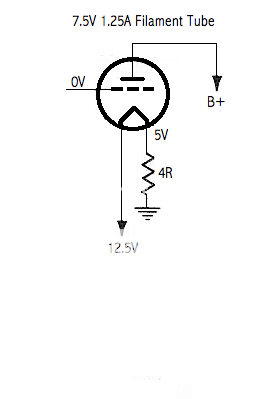The first person I ever recall utilizing such a setup was Thomas Meyer about 15 years ago...but, if I remember correctly, there was no CCS, just an L-C-L-C-L filter.
Such a setup works well, but can generate a lot of heat! Probably most practical with DHTs that have low filament current draw, like the 112A.
Jim
Such a setup works well, but can generate a lot of heat! Probably most practical with DHTs that have low filament current draw, like the 112A.
Jim
Last edited:
Thank you Jim,
Ha ha, that WOULD be a lot of heat for something like a GM70 Even with 7.5 V filament at 1.5A a 15W part would get mighty hot. Do you remember what tubes Thomas was using? I am surprised this is not used much more often. I think it would be great for the input tube of a phono-stage for instance where the typical bypass capacitor on the cathode bias resistor is so audible. Or where the graininess of LED bias is evident.
Even with 7.5 V filament at 1.5A a 15W part would get mighty hot. Do you remember what tubes Thomas was using? I am surprised this is not used much more often. I think it would be great for the input tube of a phono-stage for instance where the typical bypass capacitor on the cathode bias resistor is so audible. Or where the graininess of LED bias is evident.
Hope you are well.
Ha ha, that WOULD be a lot of heat for something like a GM70
Hope you are well.
Robert, yes using the filament of tubes for bias is another good idea. Remember, on DHT, bias measurement is always taken from the more negative voltage cathode pin. On IDH tubes connect the cathode to the positive side of the heater. There is no 'average' bias. A 12.6v supply feeding two series tubes with 6.3v heaters, that have the same current draw, would have bias voltages of 6.3v and 12.6v respectively.
Last edited:
I think this topology was used in some WW2 German radio station. Single system tubes.
I saw it in old military RX too.
Yah - I figured there was an earlier use of this approach - there always seems to be
If you have more info, I'd be curious to know what tubes this was used with back in the good ol' days...as I indicated earlier, heat becomes a major consideration with this approach.
Jim
Does anyone remember this topology discussed here? I did a search and could find no info.
Is this the thread you are looking for? http://www.diyaudio.com/forums/tubes-valves/147199-dht-bias-filament-supply-one.html
- Status
- This old topic is closed. If you want to reopen this topic, contact a moderator using the "Report Post" button.
- Home
- Amplifiers
- Tubes / Valves
- Filament current bias
